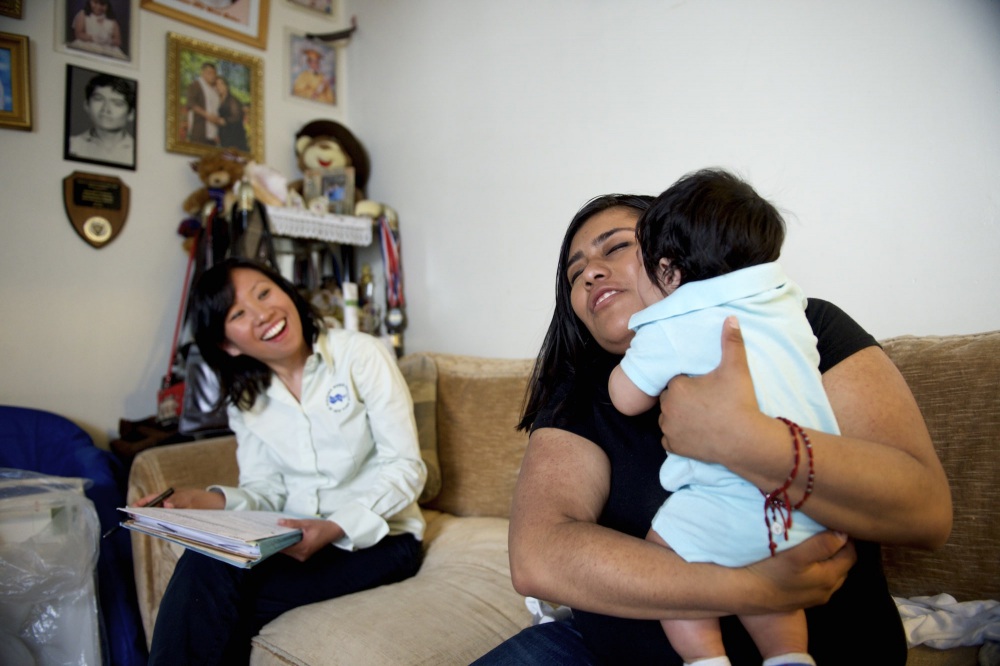

Public Sector Solutions, Children & Families, Health, Results-Based Funding
Key Takeaway
Improving outcomes and opportunity for individuals and families in need requires creativity, persistence, and a willingness to try new strategies. We encourage governments to think creatively about finding ways to improve outcomes for underserved populations.
For those of us who live and breathe outcome-based financing, signing the Social Impact Partnership to Pay for Results Act (the Results Act) into law was a huge and long-awaited achievement; many organizations have been working behind the scenes for years to bring this bill to life. But the passage of the Results Act also marks a starting point—the source of new opportunities for state and local governments to direct funding toward effective interventions and leverage federal funding to pay for positive outcomes.
The Results Act appropriates $100 million to support the launch of PFS initiatives over a 10-year period, providing an opportunity for governments to explore and implement Pay for Success (PFS) projects to improve outcomes in their community. Social Finance has developed a series of Pay for Success project design templates with example target populations; interventions; outcomes; and evaluation methodologies to help governments interested in using Pay for Success.
In a recent Notice of Funding Availability, $66.3 million of Results Act funds were made available to state and local governments for PFS outcome payments, with applications due May 22. Of these funds, half have been allocated specifically for projects that directly benefit children.
Your jurisdiction could apply for funding to:
Improve maternal and child health
The target population, outcomes, and evaluation may differ, but evidence-based home visiting programs have been proven to improve outcomes for pregnant women and new mothers across the country. Social Finance is demonstrating the power of home visiting in our South Carolina Nurse-Family Partnership Pay for Success Project. Nurse-Family Partnership and Social Finance are working with the Department of Health and Human Services in South Carolina to implement a home visiting program for low-income, first-time mothers across the state. Nurse-Family Partnership is a rigorously evaluated upstream intervention with both short-term and long-term benefits for children and families. This project served as the basis for our Maternal and Child Health Pay for Success Project Design Template, designed to help organizations navigate the myriad options to improve outcomes for this vital population.
Promote stable and healthy Families
Social Finance has also developed a Child Welfare Pay for Success Project Design Template, informed by our work on the Connecticut Family Stability Project. In this project, Social Finance partnered with the Department of Children and Families to address the impact of parental substance use on families and the child welfare system. Working with Family-Based Recovery, an intensive in-home parent-child attachment therapy program, the project offers intensive in-home supports through a team of clinicians, rather than removing children from the home while a parent receives treatment. The lessons we hope to learn from this project seem more and more relevant and urgent, as an opioid epidemic sweeps our nation.
How to get started
Pay for Success projects typically start with a simple policy objective, something that a state or local government hopes to improve. From there comes a series of decisions to narrow in on the details of the project:
- Who does my community want to serve through this project?
- What interventions are there that would help me tackle this policy priority?
- Which interventions have evidence that demonstrate improved outcomes for the target population?
- Which outcomes were actually improved, and which outcomes could I improve in my jurisdiction?
- How much value would improving these outcomes bring to the government agency and to the community?
- What is the right measurement methodology for my target population?
- Which private funders would be interested in investing in this project by providing the upfront capital to implement or scale this intervention?
In addition to the focus on children and families, the Results Act outlines 20 priority outcomes across a spectrum of focus areas and target populations, including workforce development, health, education, criminal justice, veterans’ employment and well-being, and children and families. Check out our templates for Reducing Homelessness, Reducing Recidivism, and Increasing Earnings and Employment. Even if you’re not ready to submit an application for outcomes funding in the next few months, these templates can help prepare you to apply for Results Act feasibility funding—up to $10 million of which is expected to be made available later in 2019.
Improving outcomes and opportunity for individuals and families in need requires creativity, persistence, and a willingness to try new strategies. We encourage governments to think creatively about finding ways to improve outcomes for underserved populations. At the same time, we recognize the challenges they may face and the support they may need. The Results Act presents a tremendous opportunity for governments to access federal funding to help improve outcomes for their citizens and to help policymakers effectively fund preventive services. Together, we can direct resources toward programs that achieve the best outcomes for populations in need.
Related Insight

A Story of Impact: Nurse-Family Partnership Supports Mom Terri and Daughter Aubrielle
Terri met Karen when she enrolled in the Nurse-Family Partnership (NFP) at McLeod Health in Florence, South Carolina. NFP, the state of South Carolina, and Social Finance launched the Pay for Success program in February…

South Carolina Nurse-Family Partnership Social Impact Bond: Interim Project Assessment
The South Carolina Nurse-Family Partnership Social Impact Bond mobilized $29 million to expand NFP services to more than 3,000 first-time mothers with low incomes statewide.